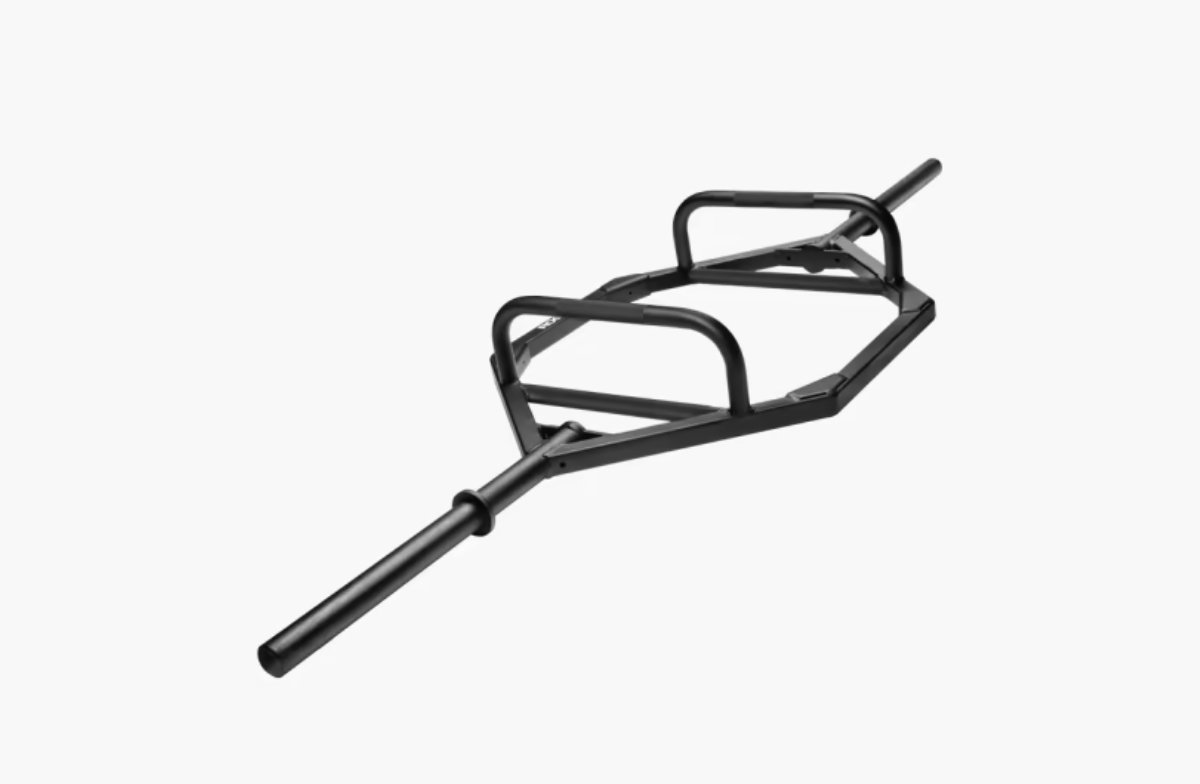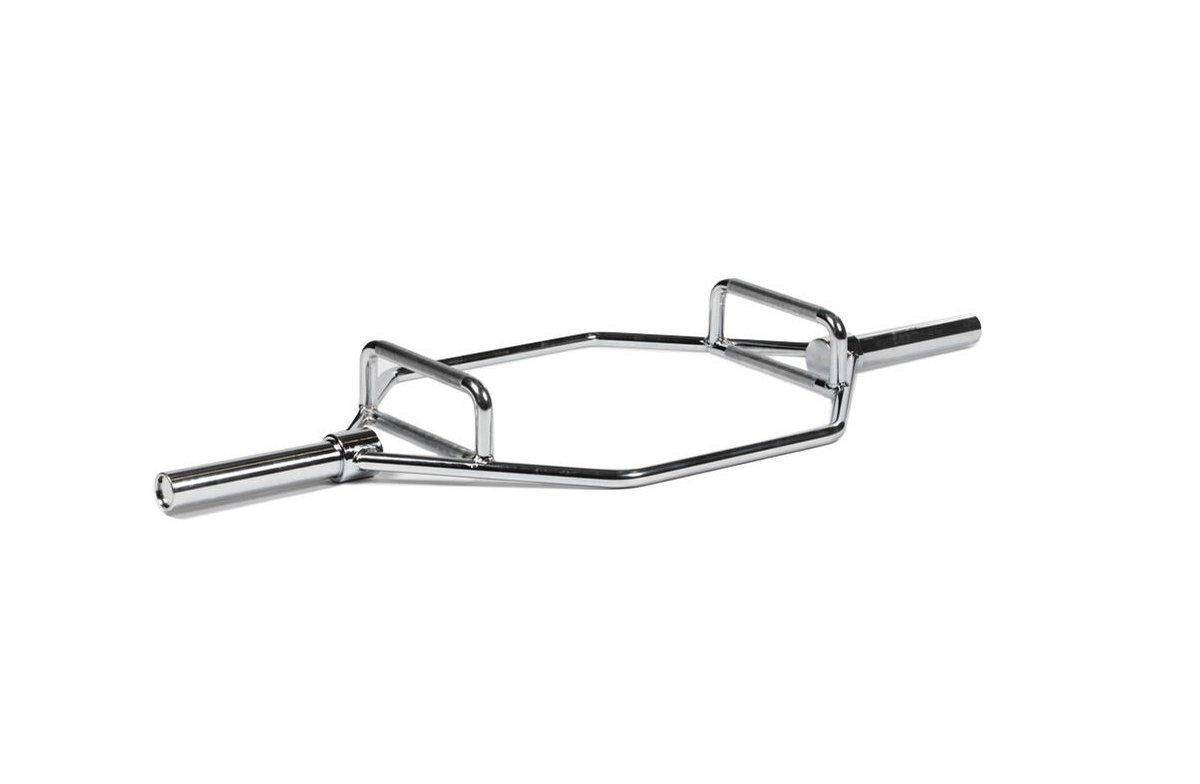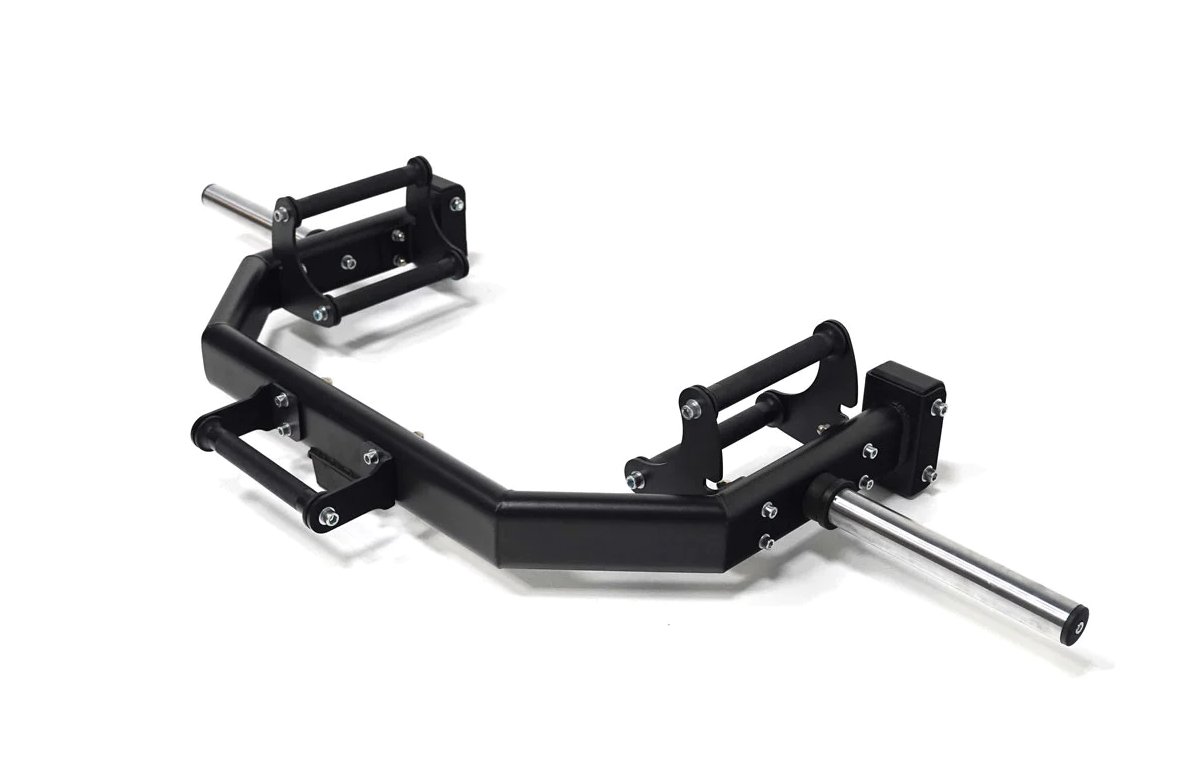As someone who has tried various types of deadlifts, I know how important it is to find the right equipment that offers both safety and effectiveness.
That’s why, based on my personal experience and countless hours spent in the gym, I decided to share my insights on whether or not a trap bar is worth your investment.
So, is a trap bar worth it?
Yes, the trap bar is a versatile piece of gym equipment that can enhance your strength training. It is particularly beneficial for deadlifts as it reduces the strain on your lower back while increasing the engagement of your quadriceps. However, its value largely depends on your fitness goals and personal preferences.
It’s not a one-size-fits-all answer, as the trap bar’s worth can vary based on your specific workout routine, fitness level, and overall objectives.
- A trap bar is worth considering due to its unique design that reduces stress on the lower back and helps prevent injuries.
- Trap bars can improve your athletic performance and offer a safer alternative to traditional deadlifts.
- To make an informed decision on whether to invest in a trap bar, consider factors such as your personal goals, existing equipment, and overall training routine.
Is a Trap Bar Worth It?
A trap bar, also known as a hex bar, is a great addition to your home gym or workout routine. This unique piece of equipment has a hexagonal shape that brings several benefits to your workouts.
Let’s explore some of the reasons why a trap bar is worth considering.
Ease of Use
A trap bar allows you to stand in the center of the bar, aligning your body more naturally compared to a traditional barbell.
This positioning reduces strain on your lower back and makes it more comfortable for performing deadlifts and other exercises.
Versatility
With a trap bar, you can perform various exercises targeting multiple muscle groups, such as:
- Deadlifts
- Shrugs
- Lunges
- Overhead presses
Improved Athletic Performance
Incorporating the trap bar into your workouts can lead to improved athletic performance. The hex bar deadlift engages more of your posterior chain muscles, promoting overall strength and power.
Reduced Risk of Injury
Using a trap bar can help minimize the risk of injury, especially for those new to weightlifting. The unique design encourages proper form and reduces the likelihood of lower back injuries.
Why Use a Trap Bar
If you’re considering incorporating a trap bar into your training, you might be wondering if it’s worth it. Here are some benefits of using a trap bar:
The Handle is Neutral Grip
One of the main advantages of using a trap bar is that it reduces the strain on your lower back compared to traditional barbell deadlifts.
The design of the hex bar allows you to maintain a more upright posture during the lift, which can help to protect your spine and reduce the risk of injury.
A Squat Rack Isn’t Necessary
With a trap bar, you don’t need a squat rack to perform deadlifts. This can save you space and equipment costs in your home gym, or allow for more efficient use of gym equipment during crowded times.
Multiple Handle Heights and Diameters
Trap bars often come with multiple handle heights and diameters, allowing you to find the most comfortable grip for your individual needs.
This versatility enables you to customize your lifting experience and target different muscle groups.
The Handle is Neutral Grip
The neutral grip on a trap bar allows for more ergonomic hand placement, reducing the strain on your wrists as compared to a barbell. This can be especially beneficial for those with wrist or grip issues.
Getting Started Is Easy
If you’re new to lifting, a trap bar can be an excellent starting point. The hex bar’s design makes it easy to learn proper lifting techniques and get comfortable with heavier weights.
Perfect for Newcomers
The simplicity and safety offered by the trap bar make it a great option for newcomers to weightlifting.
The reduced strain on your back and neutral grip can help build confidence and establish a strong foundation for future training.
It is Possible to Lift Heavier Weights
The hex bar’s center of gravity allows you to lift heavier weights more quickly, potentially leading to increased strength gains over time.
Related Read: How Much Does A Hex Bar Weigh?
Pressing Movements Are Safer
A trap bar can also be used for safer pressing movements, such as shoulder presses and bench presses, thanks to the neutral grip and more stable lifting position.
The Disadvantages of a Trap Bar
Large in Size
Trap bars, or hex bars, are larger and bulkier than traditional barbells. This can make them difficult to store in a home gym or small training space.
It may be challenging to find room for your trap bar, especially if you have limited space available, like a home gym shed.
It’s An Unfamiliar Implement
For many people, the trap bar is an unfamiliar piece of equipment.
If you’re new to lifting, it might take some time for you to get used to the unique grip and body positioning required to use a trap bar effectively.
Remember to approach this new implementation with patience and give yourself time to learn the proper technique.
It can be Challenging to Add Weight Plates
Adding weight plates to a trap bar can be more difficult than loading a conventional barbell.
The shape of the trap bar requires you to carefully maneuver and balance the plates, which can be time-consuming and frustrating.
Be prepared to spend a little extra time setting up your trap bar for your workouts.
There are too Many Variations
There are multiple variations of trap bars on the market, which can make it confusing when deciding which one to purchase.
Some trap bars have raised handles, while others are flat or adjustable. It’s essential to do your research and choose the trap bar that best suits your needs and preferences.
Overall, while a trap bar can offer several benefits like reduced lower back strain, it comes with its own set of drawbacks.
Consider your individual needs, goals, and gym setup to determine if a trap bar is the right investment for you.
What are the Features of a Trap Bar?
When it comes to deciding whether a trap bar is worth it, it’s important to understand its features and how they can benefit your workout.
In this section, we’ll look at the main aspects of a trap bar, such as the types available, handle diameter, and the loadable sleeve length.
Types of Trap Bars
There are several types of trap bars, each with its own unique design and benefits. Let’s take a quick look at some of the most common types:
- The Standard Trap Bar: This is the most common design, featuring a hexagonal shape that allows you to step inside and perform deadlifts, shrugs, and other exercises.
- The EZ Load Trap Bar: This version comes with slightly raised handles, making it easier to load and unload weight plates. This can save you both time and energy during your workouts.
- The Open Trap Bar: This trap bar features an open design, allowing for more versatility in exercises and accommodating users with limited mobility or special requirements.
Handle Diameter
The handle diameter is an important aspect of a trap bar, as it directly affects your grip and comfort during exercises.
Handles typically range from 25mm to 50mm in diameter, with the thicker handles offering a more challenging grip for your workouts.
It’s essential to choose a handle size that not only suits your hand size but also your training goals.
Loadable Sleeve Length
The loadable sleeve length determines how much weight you can add to your trap bar.
Most trap bars come with standard-length sleeves (around 10 inches), but some offer longer options to accommodate more weight plates.
When choosing a trap bar based on sleeve length, consider the maximum weight you plan to lift and ensure that the bar can hold it safely.
What is the Best Trap Bar to Buy?
In this section, we’ll explore some top trap bar options for different needs and budgets. Specifically, we’ll cover the best overall, budget, and versatile trap bars.
Best Overall Trap Bar: Rogue TB-2

The Rogue TB-2 is widely considered the best overall trap bar. Its signature black powder coat finish provides durability, while the low and high rotating lifting handles ensure versatility in your exercises.
The high-quality materials and manufacturing from Rogue make it a reliable and long-lasting investment for your home gym.
Best Budget Trap Bar: Titan Fitness

When it comes to finding a reliable and affordable trap bar under $200, Titan Fitness’s Olympic Hex Weight Bar stands out.
This trap bar is designed for easy use and features both low and high handles, adding versatility to your workouts.
Check out the Titan Fitness Olympic Hex Weight Bar to find a quality trap bar that fits your budget.
Best Versatile Trap Bar: Force USA Walkthrough Trap Bar

For those who value versatility, the Force USA Walkthrough Trap Bar is a top choice.
This unique design allows you to transition between various exercises and positions smoothly.
With features like rotating lifting handles and a sturdy construction, you can trust this trap bar to meet your dynamic workout needs.
Comparing Trap Bars
In this section, we’ll compare trap bars to other types of bars, mainly focusing on the standard barbell and the differences between open-ended and closed trap bar designs. This will help you determine if a trap bar is worth it for your training needs.
Trap Bar vs Standard Barbell
Hex trap bars, or “trap bars,” are a special kind of bar with a hexagonal design that lets you stand inside while lifting. This design offers several advantages over a standard barbell:
- Neutral grip: Using a trap bar allows for a neutral grip, where your palms face each other, which can be more comfortable and reduce stress on the shoulders and wrists.
- Range of motion: The trap bar places less stress on the spine and allows for a more natural range of motion, making it an excellent choice for those with back issues or mobility limitations.
- Durable: Trap bars are typically more robust and durable than standard barbells, making them a long-lasting addition to your home gym.
On the other hand, using a standard barbell allows for a more extensive range of exercises and is easily incorporated into different workouts. It is also generally more accessible and less expensive than a trap bar.
Open-Ended Trap Bar vs Closed Design
Trap bars come in two main designs: open-ended and closed.
- Open-Ended Trap Bars: These bars have one side open, allowing for easier entry and exit. Additionally, they tend to be more versatile as you can execute exercises like lunges or split squats, which may not be possible with a closed design.
- Closed Design Trap Bars: The closed design offers more stability during lifts, especially for those who may struggle with balance during heavy deadlifts. It also creates a more confined space, which can lead some lifters to feel more secure and in control.
Ultimately, choosing between an open-ended and closed design comes down to personal preference and your specific training goals.
Here’s a comparison table to help you compare the features of each design:
| Feature | Trap Bar | Standard Barbell | Open-Ended Trap Bar | Closed Design Trap Bar |
| Grip | Neutral | Pronated or supinated | Neutral | Neutral |
| Stress on Lower Back | Lower | Higher | Lower | Lower |
| Versatility | High (deadlifts, shrugs, farmer’s walks) | High (wide range of exercises) | High (additional exercises like lunges possible) | Moderate (limited by closed design) |
| Accessibility | Less common, more expensive | Most common, less expensive | Less common, more expensive | Less common, more expensive |
| Safety | Higher (due to design and grip) | Lower (depends on exercise and form) | Higher (due to design and grip) | Higher (due to design and grip) |
Please note that the specific features can vary by brand and model, so it’s always a good idea to check the specifications of the individual product before making a purchase.
Final Thoughts
To wrap it up, whether a trap bar is worth it really depends on you. If you’re just starting out or want to go easy on your back, it’s a fantastic tool.
It’s not just for deadlifts – you can use it for other exercises like shrugs, bent-over rows, and farmer’s walks.
But if you’re all about classic deadlifts or targeting specific muscles, you might want to stick with what you know.
In the end, if it fits your workout style and feels good, it’s worth considering.

